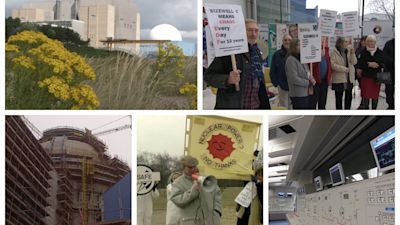Going nuclear: the issue that's divided a Suffolk community for 50 years

If you ask two people about nuclear power in Sizewell, you'd probably get two entirely different opinions.
Since British Energy announced that the Sizewell A plant had started delivering electricity to the UK in 1966, the same year that England won the world cup, the issue of nuclear power has divided this coastal community.
In 1995, Sizewell B began to deliver power to the UK grid, but its construction was controversial.
Over the past 25 years Sizewell B has generated 218 trillion watt hours of electricity, enough electricity to power 58 million homes.
Sizewell B's construction split opinion in the area. Campaigners raised concerns about the amount of traffic through the village, the danger of nuclear waste and the damage to the natural environment around the reactor.
Nearby at RSPB Minsmere, there have been concerns for wildlife at the internationally important site.
Sizewell B took 8 years to build, involving 6000 builders, before the first electricity went into the grid on Valentine's day in 1995.
It's one of only 15 operational nuclear plants in the UK.
In 2006, work began to decommission Sizewell A at a budgeted cost of over £1 billion.
Sizewell B is expected to be operational for another 15 years.
EDF took over the operation of the reactors in 2009 following the sale of British Energy. They say nuclear is clean and reliable, but others are concerned it’s too slow and expensive.
History has a habit of repeating itself in Sizewell, and in 2015 the government confirmed that Sizewell would be one of three sites in the UK chosen as suitable for construction of a new reactor - Sizewell C.
The issues of concern remain largely the same, but with added diplomatic edge, following the announcement that China would have a stake in the consortium behind the construction.
Locals in the area remain committed to their campaign to stop a new nuclear reactor, but this time round there were concerns about whether the pandemic might silence their voices.
EDF say it will provide 25,000 jobs during construction and 900 permanent jobs – around a third will be filled by local people. The station will be worth £125million a year for the local economy during construction and £40m during its operation.
There have been four public consultations over several years. Now EDF has submitted their proposals to the Planning Inspectorate, despite pleas for it to be delayed because of the pandemic. People can now view all the plans online and have until 30th September to submit any final comments.
So while history might be repeating itself, the challenges this time round are entirely unique.